Bill Newcomb is a fairly well known architect in Michigan as he has several designs in the state which he takes credit for. He grew up in Indiana and played four years of college golf at the University of Michigan. Newcomb was a very good amateur golfer who won the 1961 Indiana Open and played in the Masters. Unusual for an architect, after winning the Michigan Amateur in 1967, Newcomb became the head coach for the Michigan golf team, a position he held for 10 years. As part of a graduate studies project Newcomb planned and routed Radrick Farms. His report recommended Pete Dye among others as an architect to build the course and Dye ended up being hired. This in turn led to Newcomb working with Dye for three years before he struck out on his own in 1968.
I have played several Newcomb designs which include the Polo Fields, Travis Pointe, Links at Whitmore Lake, Concord Hills, Tanglewood and Riverview Highlands. All have holes which impressed me, but the courses as a whole didn't make much of an imprint on me in terms of what really gets me excited about golf; Newcomb's courses are solid if unspectacular. A few good golfing mates in Michigan have long pointed me toward Calderone Farms as a somewhat unusual faux links along the I-94 corridor in Grass Lake between Jackson and Ann Arbor. Additionally, a handful of GCAers have praised the course on this site. So, I finally made the drive on a fine fall day accompanied by crisp sunshine and the talk of college ball. My first two impressions of the course were 1) why the heck didn't the archie make this a very comfortable walking course? and 2) there are a lot of blind/obscured drives on this quite rolling farmland. It seems to be common these days that archies don't give a lot of thought to the walking golfer. This could be because often times carts are a necessity for many clubs to turn a profit, but given the common pricing structure of many publics to include the cart in the green fee, this doesn't make much sense. In any case, the course is walkable, but every tee to green walk is uncomfortably far. This leads me to the next point of blind/obscured drives. Many times archies accept the extra walk to create vistas from the tee. Oddly, a great many of Calderone Farms' tee shots are blind or obscured. I don't mind this characteristic, but its strikes me as odd to walk a distance for the pleasure of a blind tee shot.
Before I head to the course, a few pictures of Americana are in order. First up, an old school house (I believe) has been left standing in what seems to be an improbable position isolated from any sort of population.
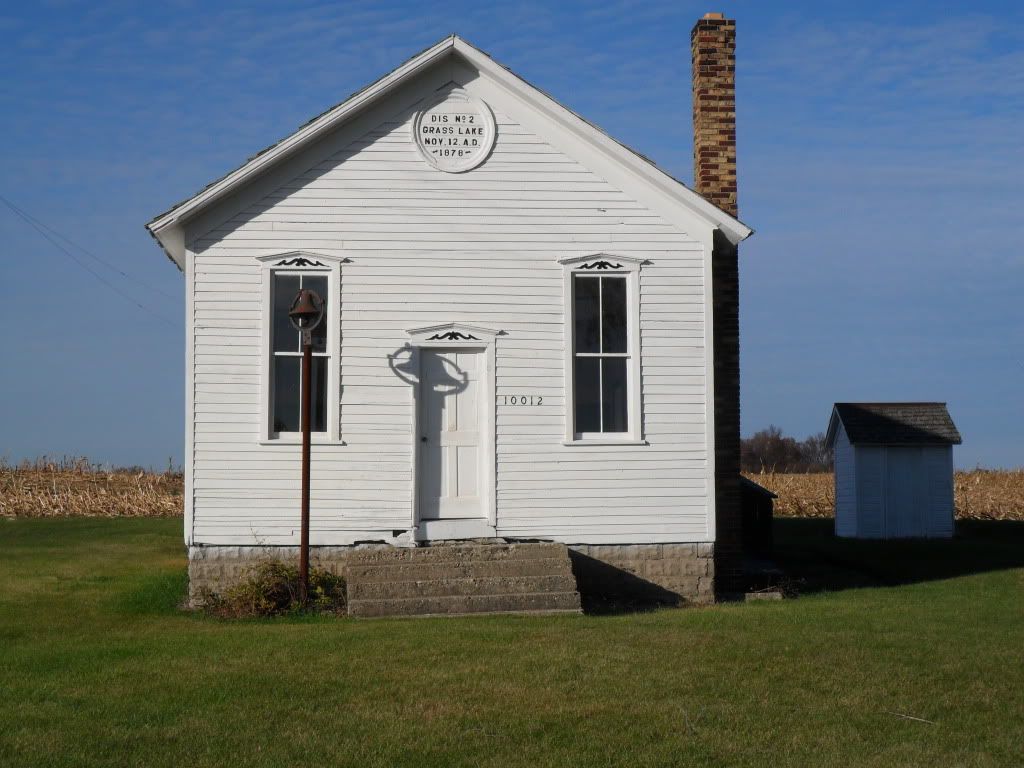
Directly across the street is one of the more bizarre hall of fames I have encountered. Seeing this sort of thing reminds me that some things never change and long may this be so. Curiously, listening strictly to the radio, I was struck by the time wharp popularity of The Cars, Bob Seger, Billy Joel and Led Zeppelin. Although, much to my surprise, Led Zeppelin sounds better in Michigan than in England - who woulda thought? Incidentally, this seemingly innocent Bambi park is the main bone of contention which led to a new ownership of Calderone Farms.
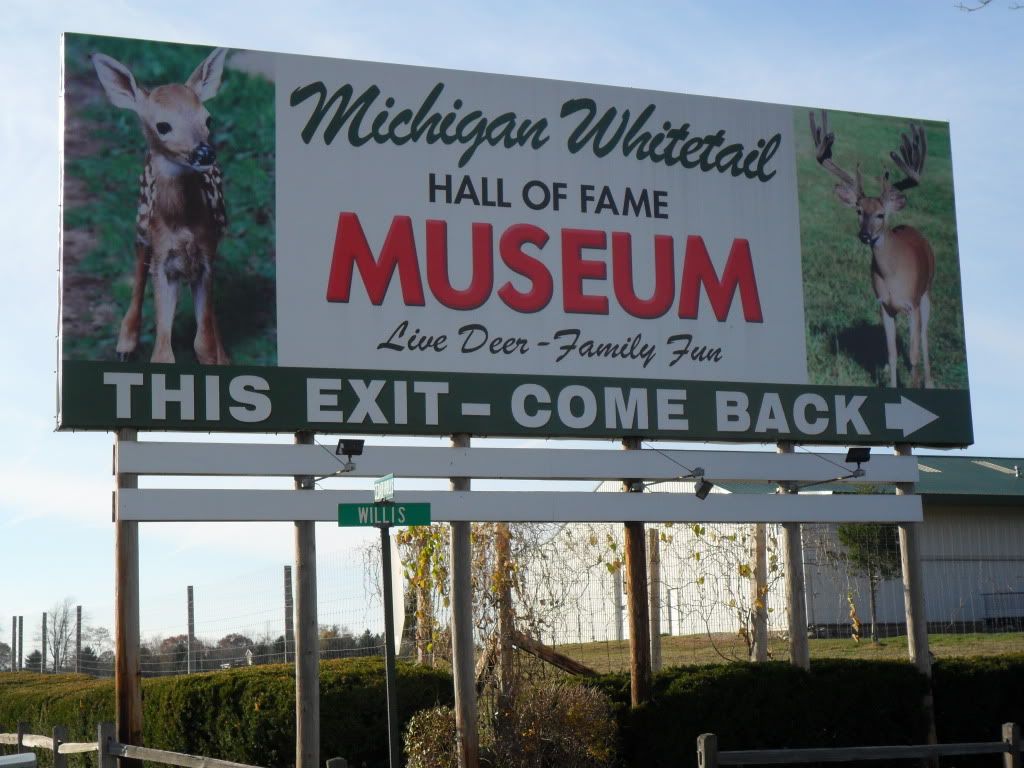
Driving toward the lot and house the sight is promising; rolling corn fields with combines doing what combines do this time of year. Its as if the corn was cut and flags were stuck in the ground. Of course, there are obvious signs of shaping and at times this work is not done well, but the overall impression is pleasing...until we see the second shot at #1. The reachable par 5 opener plays around the Bambi park! The owner of the museum erected the tall fence to protect his property from his brother's sheenanigans on the golf course. BTW - yes, that is I-94 in the background. Quickly exiting the nightmare opener we find a good looking par 3.

The third is a short par 4 which is quite appealing.
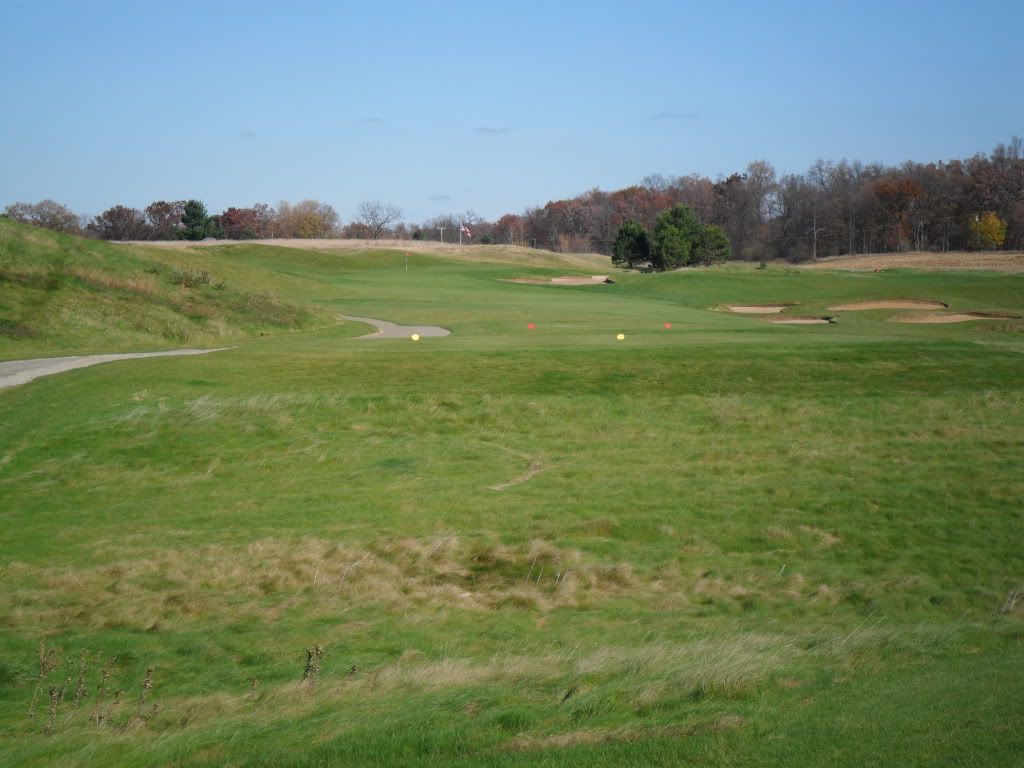
The difficulty rachets up a few notches on the long two-shotter 4th. I am not in the least convinced by the sprawl of pots covering the inside of the leg. Generally, the bunkering is a major let down as it should inspire temptation. More often than not the sand seems an afterthought which doesn't successfully integrate with the wonderfully rolling terrain.
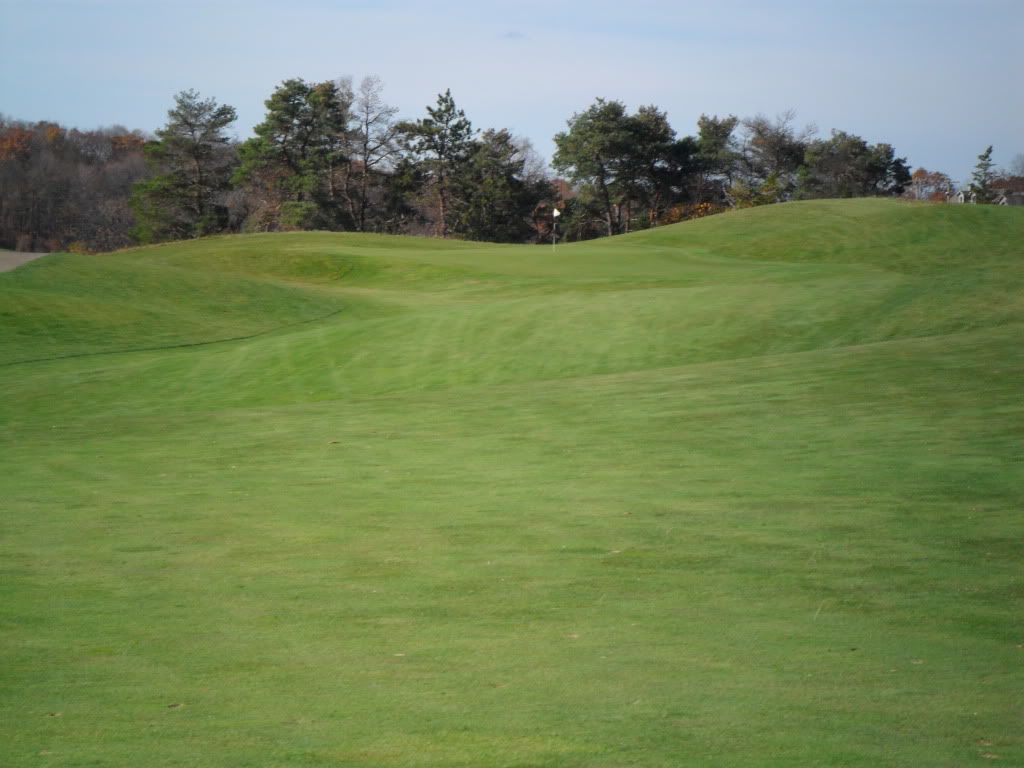
On a few occassions Calderone Farms does feature one of my favourite design concepts, long range views beyond greens. After driving blindly over a hill this sublime sight is what remains of the 5th.
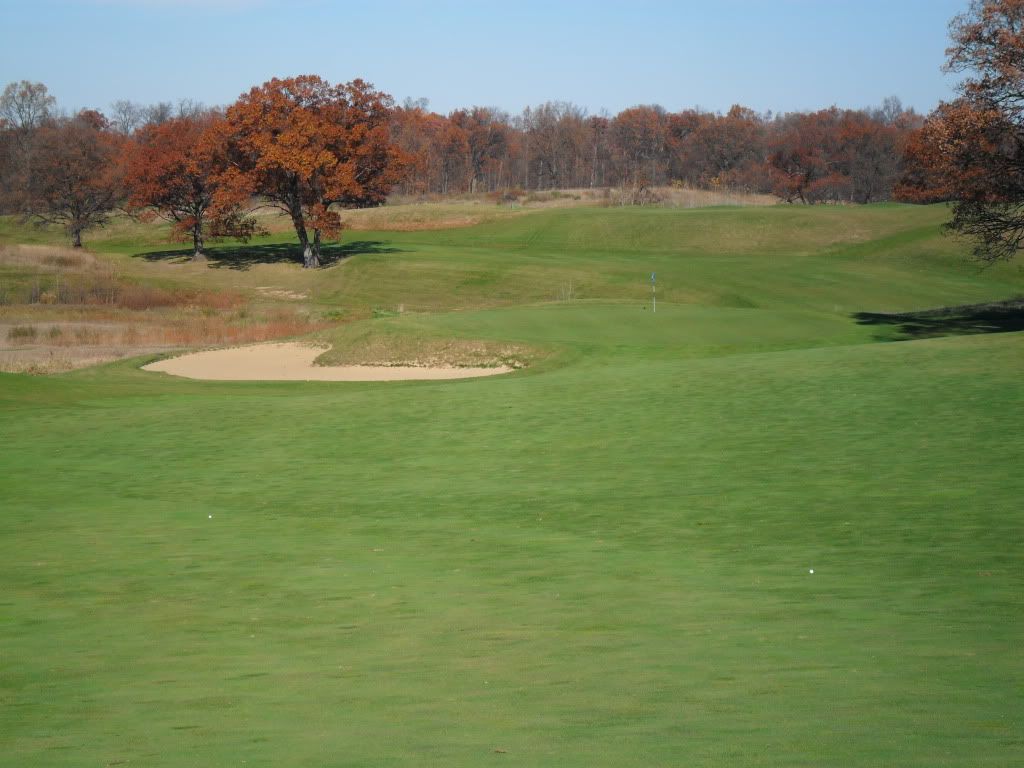
The par 5 6th turns back on the 5th and is reachable in two. Generally speaking, as is the case with much of the design, while not poor the greens lack pizzaz or any sort of bold statement. #7 is a short two-shotter playing blindly over a modest hill. The bunker complex is interesting and something I would have liked to see more of at Calderone Farms.
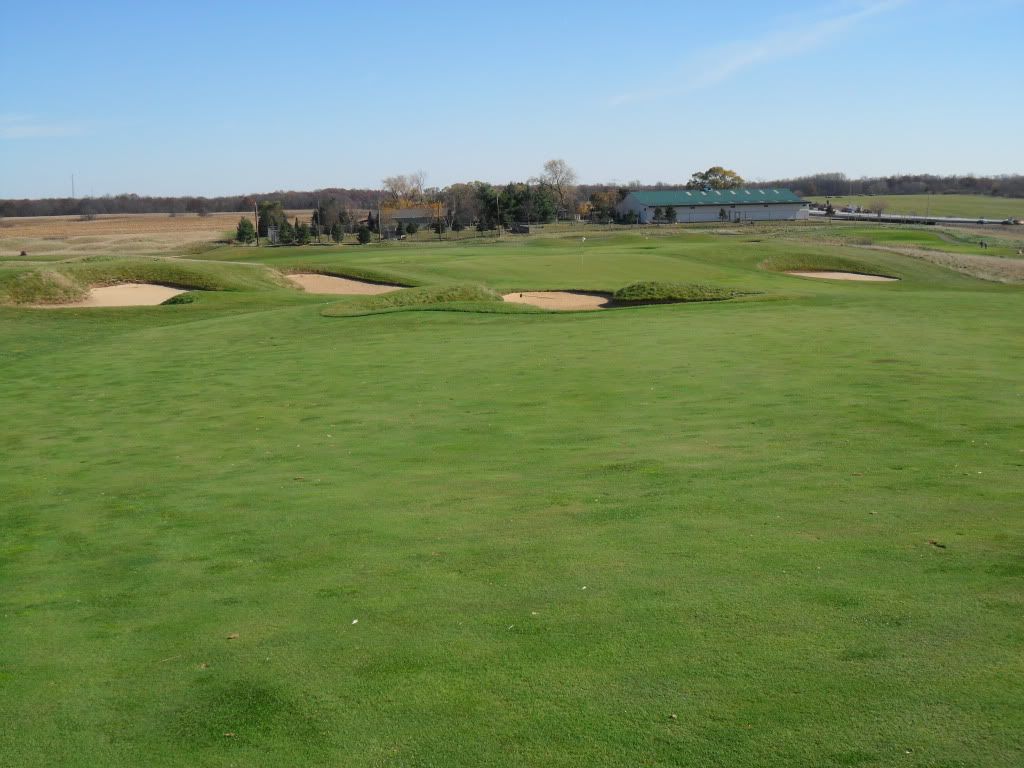
While testing, the short 8th is not a particularly inspiring hole, but the saddle cut bunker on the right is eye catching.
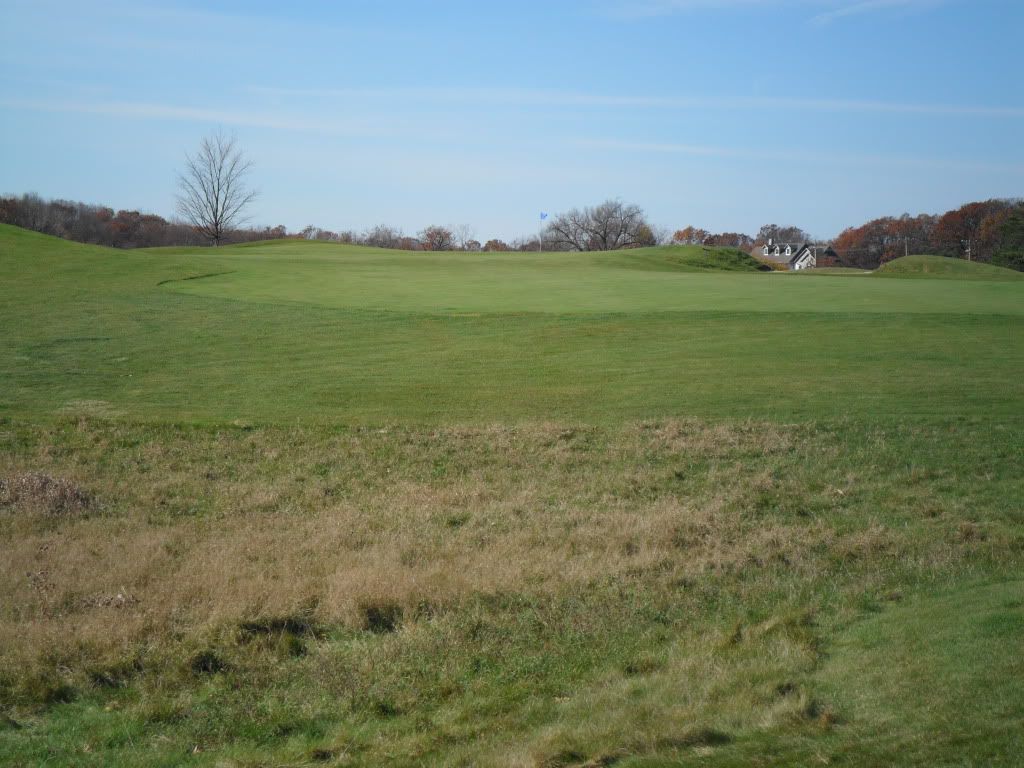
A fatal error of design is committed on the 9th - a blind water hazard. One saving grace is the width of the fairway, but someone with experience needs to be on hand to point it out. This is a shame because other than the blind water the concept of the hole is intriguing.
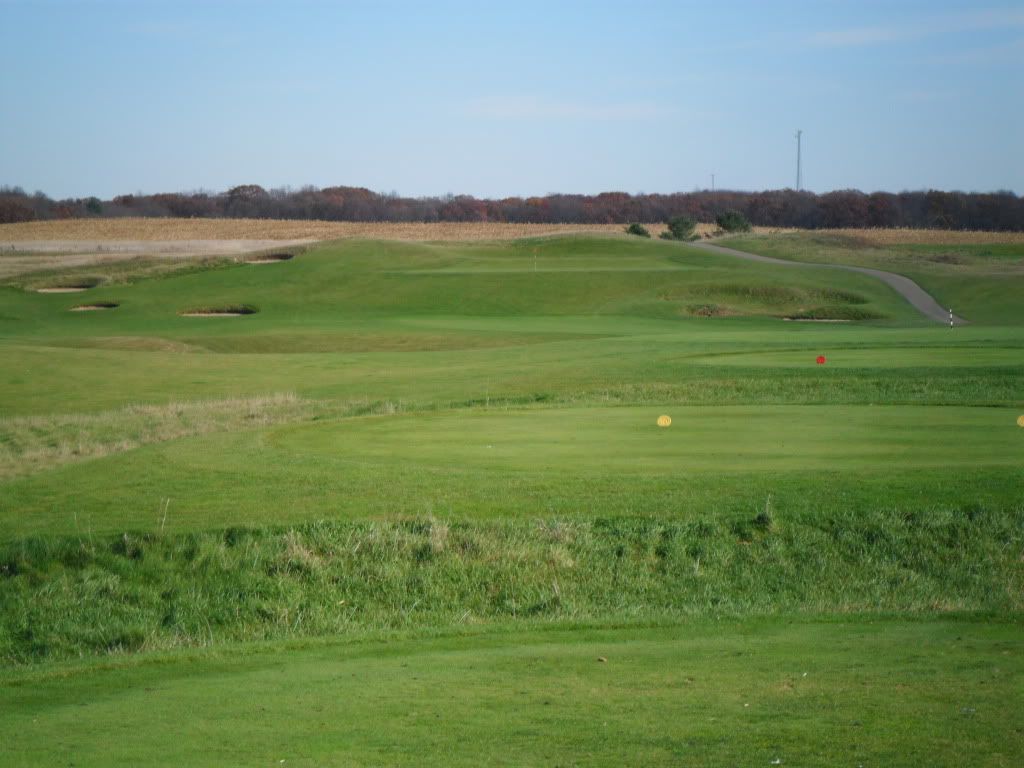
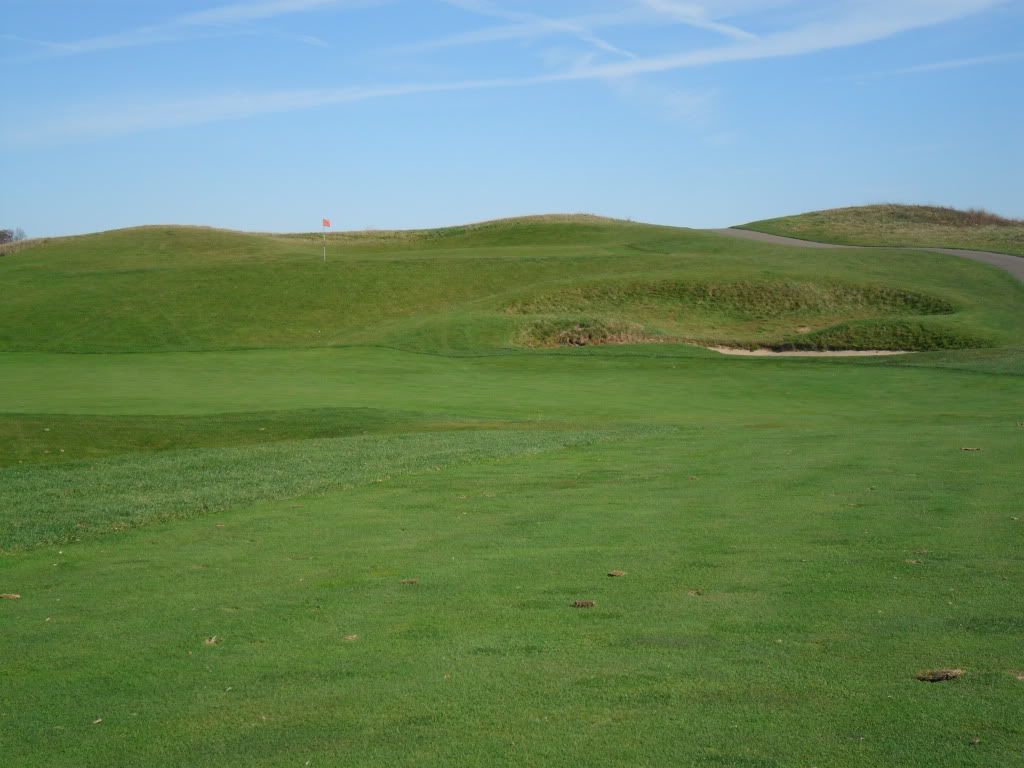
After yet another trudge to the next tee, the 10th gives us a glimpse of the corn and what this land looked like some dozen years ago. The approach after a VERY long drive.
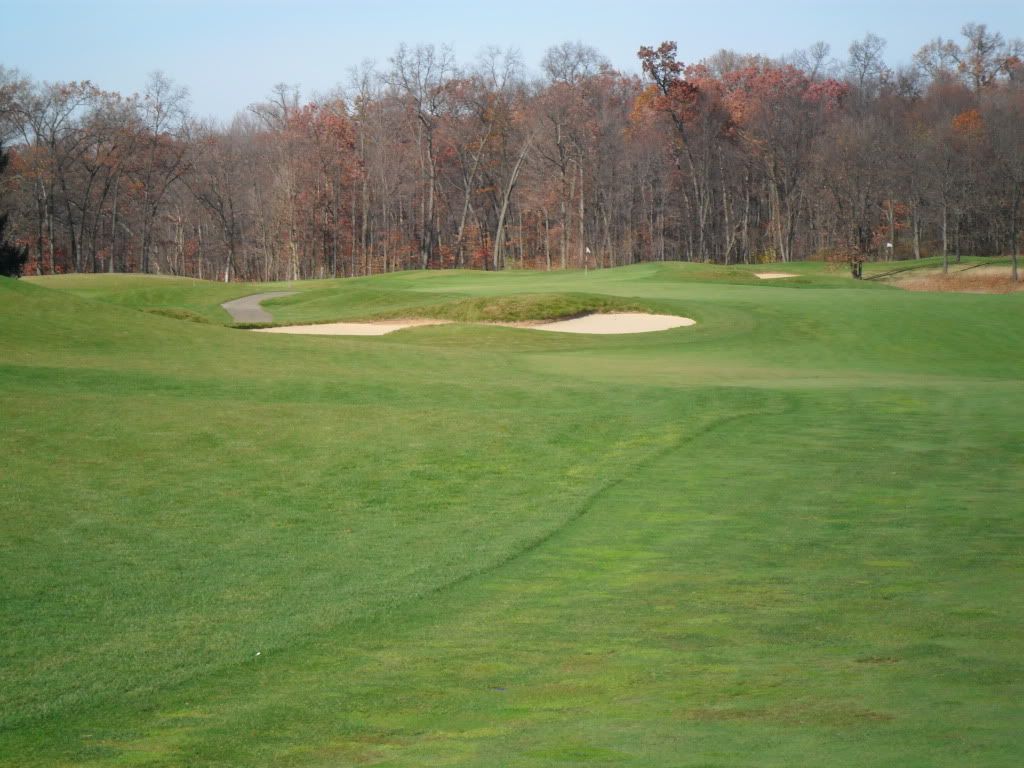
As on the 5th/6th, the 11th runs along a waste bunker on the left which transitions a hill to fairway. The approach is quite interesting because of the two-tier green and rear ears which are pinnable.

One may be able to make out the ears of the green on either side of the rear centreline bunker.
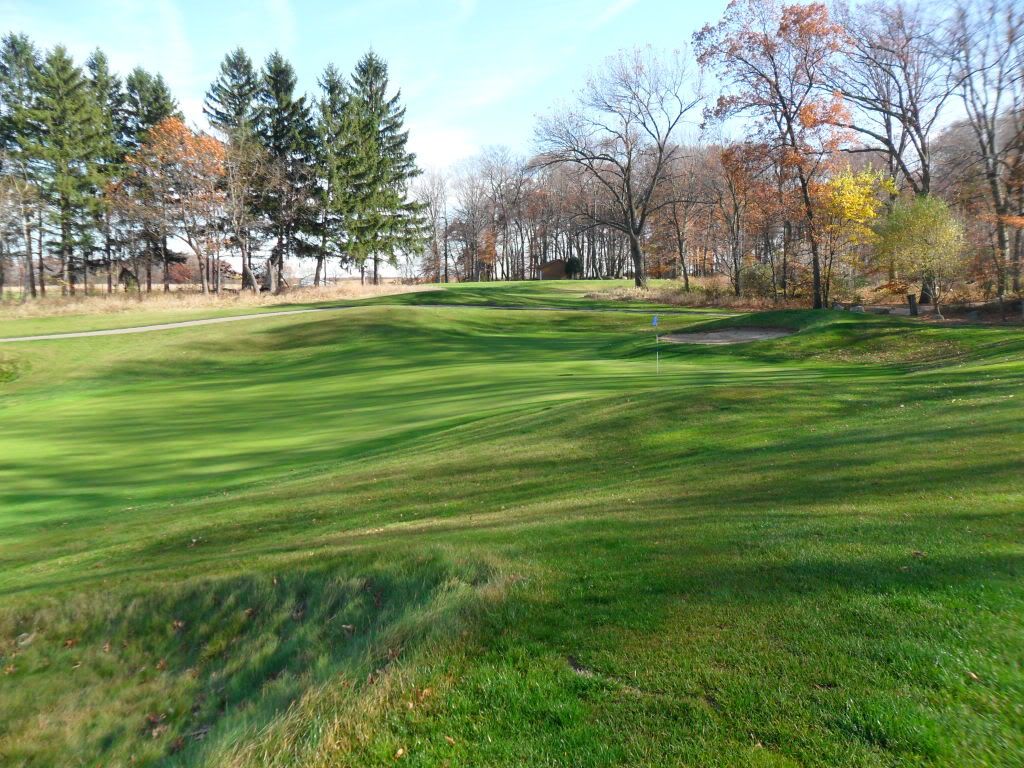
The 12th highlights the sort of shaping Newcomb did which helped facilitate superb drainage on the site. To the right is one of the waste bunkers like at #s 5/6 & 11. The fairway is built up sharply on the right to create the surface drainage. For those that have played Westfields near WDC, this is quite similar. Several fairways are similar to this and the payoff is wonderfully firm fairways.

The drive is actually quite tight and many will choose to lay-up as this is a short par 4.
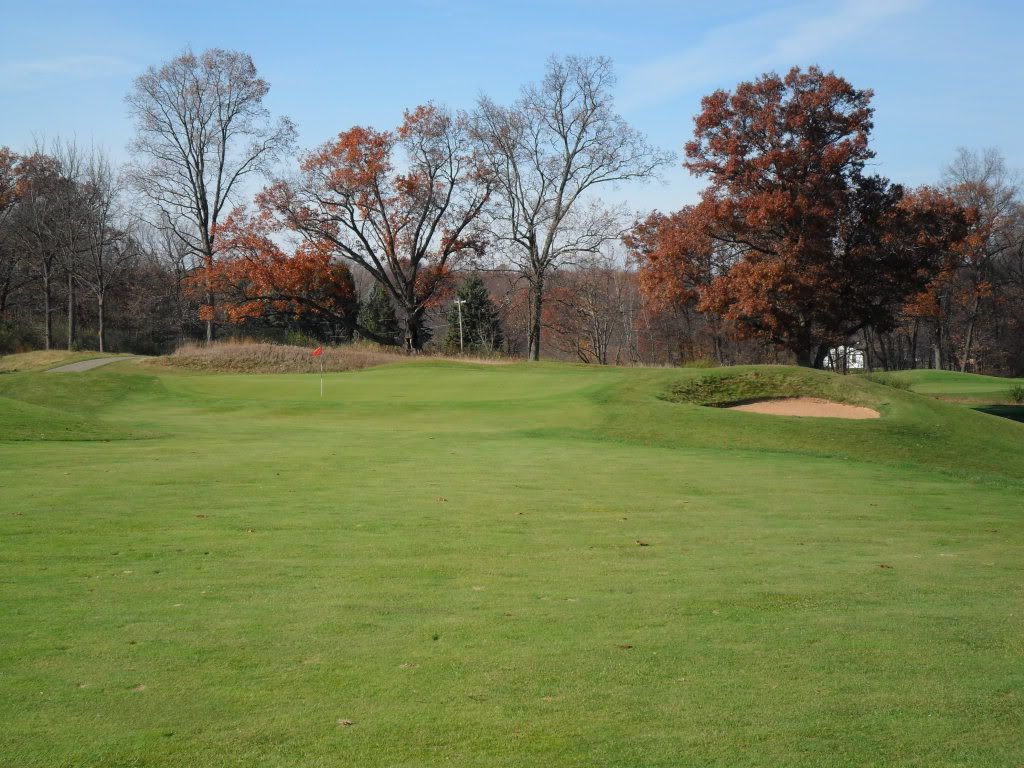
The course is now starting to transition into a more wooded area. The par 5 13th is unremarkable except for the great green complex.
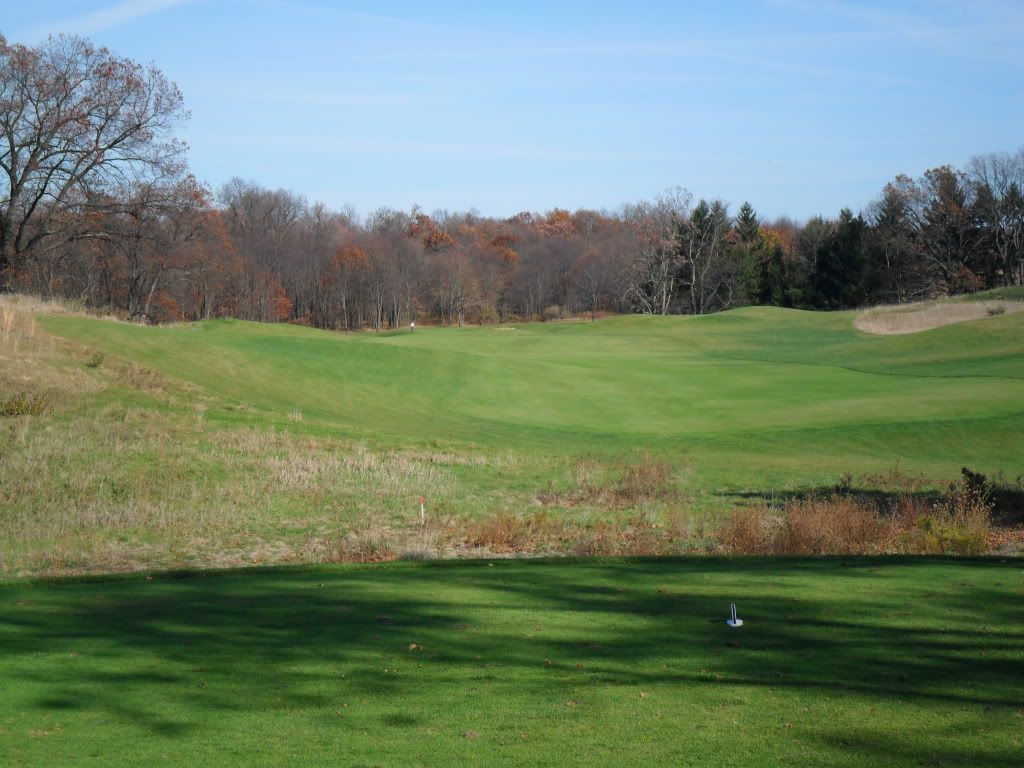
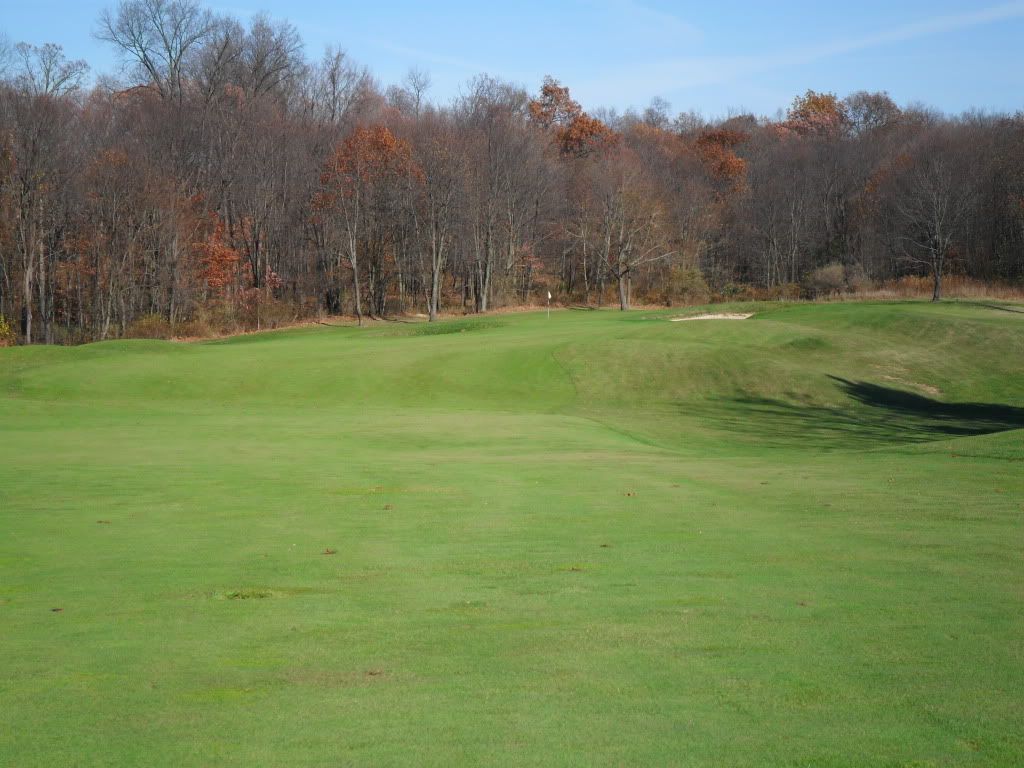
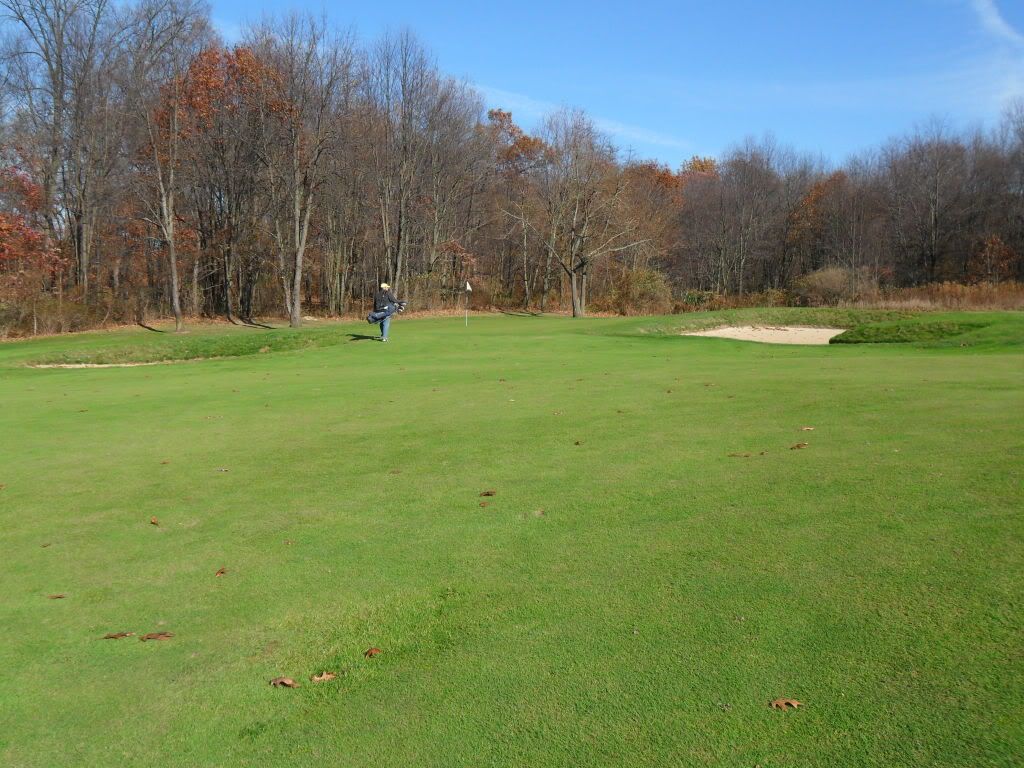
#14 turns very hard to the right. There is a cool ridge in the fairway which is helpful to drive past for a much easier approach.
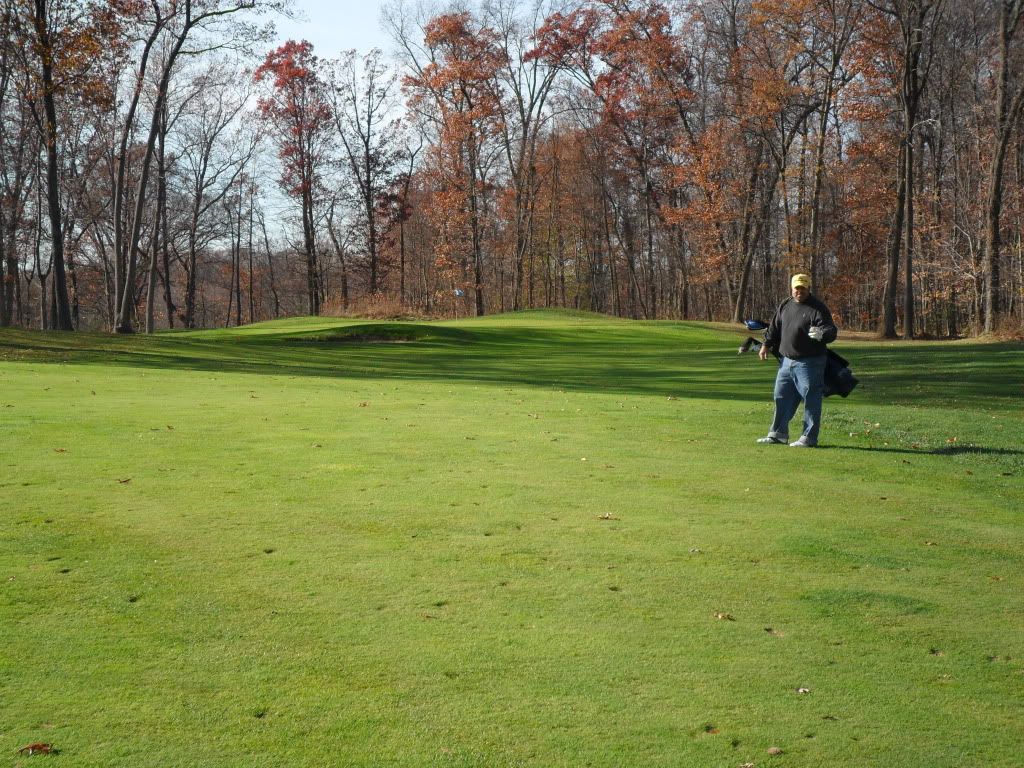
The following hole is an attractive par 3 with a hard sloping back to front green. Once again, I am not convinced the bunkers work very well. Additionally, and this is a serious problem, all the bunkers I saw were full of rocks. Playing from the greenside bunker at #13 a rock flew up and hit me in the face.
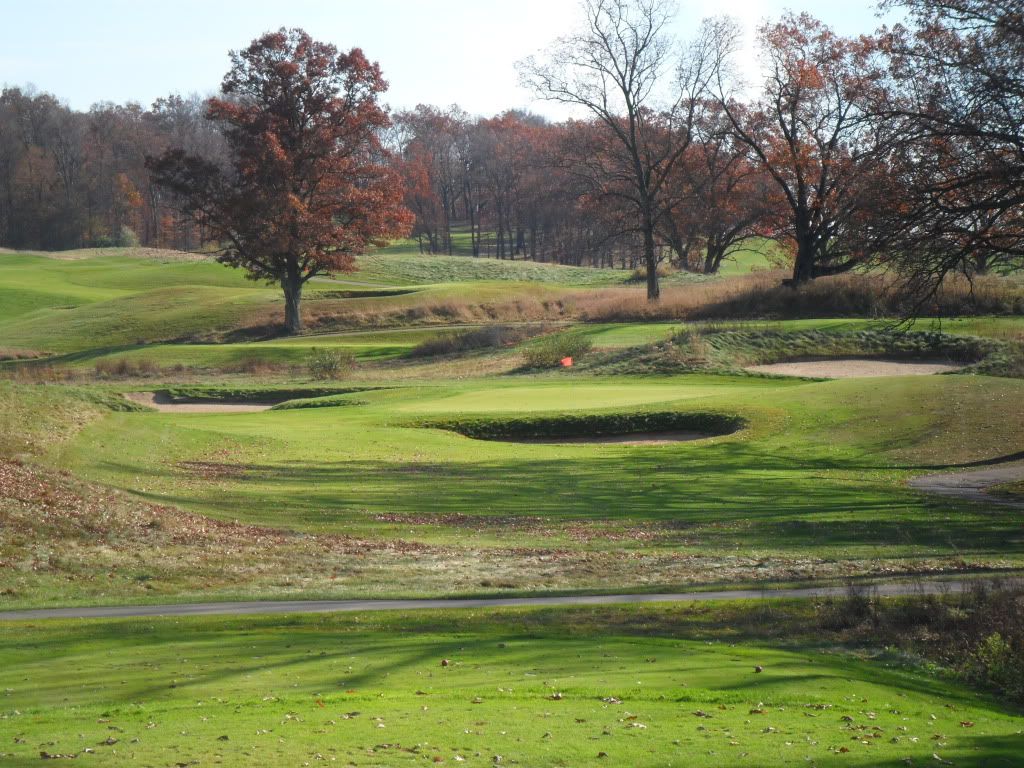
The 16th is an unusual hole bending sharply around trees and a low-lying wet area. The approach is lovely with the 5th in the background. Its almost as if Newcomb was frightened to really go to town with this property because there are glimpses of what could be, but then he reins back to the all too familiar.

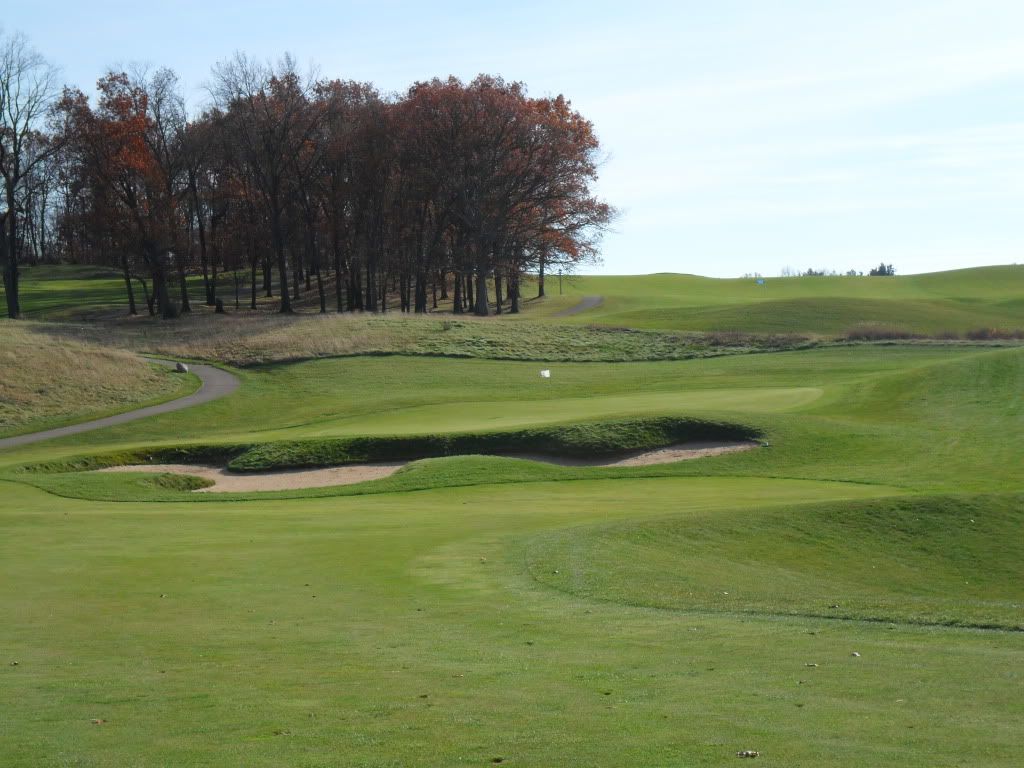
The very tough uphill 17th.

The home hole runs parallel to the 9th with the water dividing the two holes. Unlike the 9th, this is a very narrow fairway considering the water can't be seen.
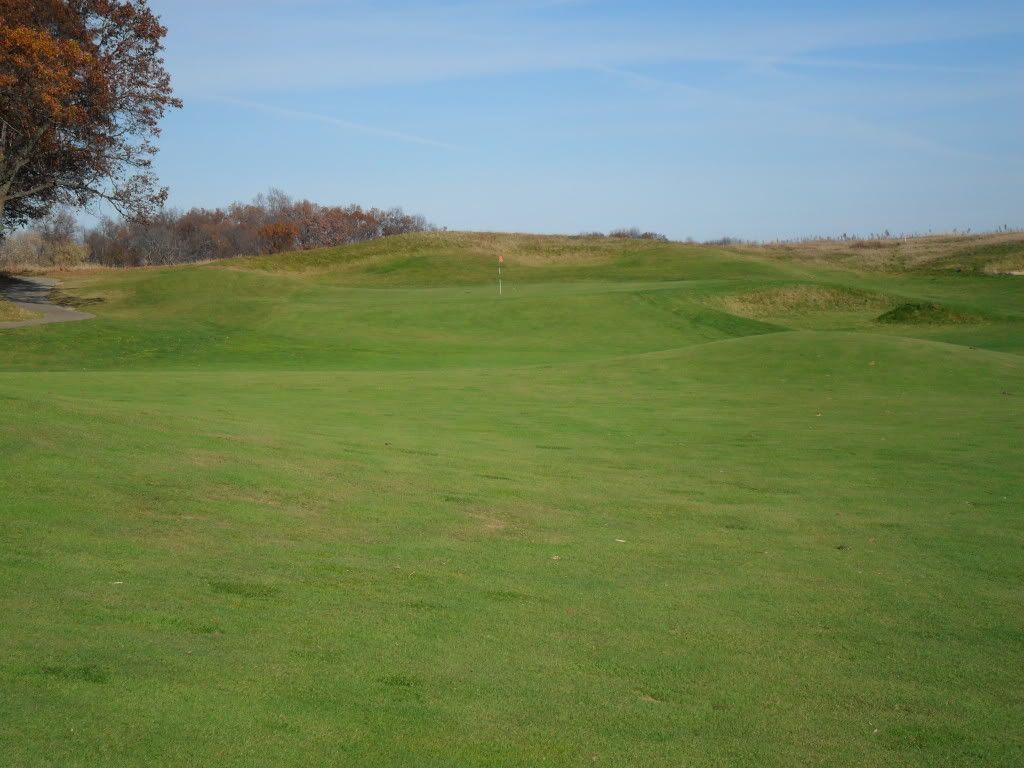
I have likely been a bit hard in my remarks concerning the course, but if this is the case it is because I think the Calderone Farms could be far better and that Bill Newcomb is more than capable of doing the job. At the end of the day, Calderone Farms is easy on the eye and at $30 to ride during the week it won't break the bank. If one is looking for a quick game while traveling along I-94 between Detroit and Chicago, by all means have a go. 2010
Ciao